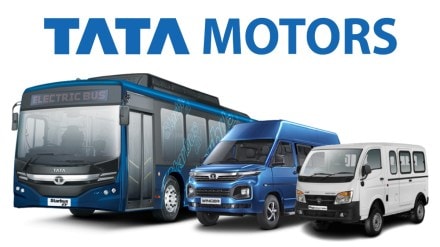Tata Motors is set to go through a momentous change tomorrow (October 1) — after nearly 80 years as a unified company, it is poised to split into two distinct entities. The stated purpose is to sharpen focus on passenger vehicle (PV) and commercial vehicle (CV) businesses amid rising competitive pressures that have chipped away at its market share.
The automaker’s market share in the PV segment —which includes cars, SUVs, and vans—declined from a peak of 14% at the close of FY23 to around 12% by August 2025, according to data from the Society of Indian Automobile Manufacturers (SIAM).
Despite Tata Motors’ ambition to grow its market share to 20% by 2030, established rivals such as Maruti Suzuki, Hyundai, and Mahindra & Mahindra are intensifying their efforts to defend and expand their positions.
Here’s what analysts said
Analysts say the demerger is designed to grant each business the autonomy to execute tailored strategies and pursue faster growth with increased agility.
“Tata Motors is aiming to achieve 30% penetration of EVs in its PV volumes. This implies that volume growth will be driven by EVs. Even today its volumes are EV driven with a penetration of 13-15%,” said a Mumbai-based analyst.
Other analysts added that delays in product launches have also weighed on market share. Tata took nearly 20 months to launch the Curvv SUV after its initial reveal, allowing Hyundai to capitalise with the launch of the new Creta, solidifying its leadership in the segment.
While Tata Motors focused on defending its domestic market, its export performance lagged significantly.
As of August, exports accounted for just 5% of total sales, compared to 27% for Hyundai and 19% for Maruti Suzuki.
Besides, with a majority of its volumes coming from compact cars Nexon and Punch, selling premium priced electric cars could become challenging, say experts.
Shailesh Chandra, currently heading the passenger vehicle and electric vehicle (EV) divisions, will take over as the managing director and CEO of Tata Motors from October 1. He will retain his position as managing director of Tata Passenger Electric Mobility, a subsidiary.
The biggest beneficiary of the split is Tata’s CV division, which has seen a worrying decline in market share. Senior officials of the auto giant acknowledged that ”compromises had to be made in the CV business to get the PV business on track’’.
While trucks and buses remain subject to market cyclicality, the company plans to expand segments within its CV portfolio that are less vulnerable to market swings. There are eight business verticals within Tata Motor’s CV unit of which three never existed.
Speaking to FE earlier, Girish Wagh, executive director, Tata Motors, said: “The demerger will allow CV business to pursue its own aspirations. There will be freedom to access capital and grow in areas which would not have taken priority otherwise.”
Wagh, who will join TML Commercial Vehicles (the newly formed demerged entity) as its managing director and CEO, will be keen to arrest and reverse the slide in Tata Motors share in the CV segment.
Tata’s domestic CV market share
From a dominant 45% share in FY22, Tata’s domestic CV market share slipped to 36% in FY25, as per SIAM data. Wagh has set an aggressive target to reclaim 40% by FY27.
Tata Motors’ CV business generates revenue of about Rs 80,000 crore, generating 10-11% EBITDA and spending about Rs 2,000-2,500 crore on capex. CV has always been a cash rich engine, generating ROCE (return on capital employed) of 36%.
“Its ability to double down on investments in areas such as international business, downstream spares and service, smart city mobility, digital business, are much higher because it can be on its own,” said another Mumbai-based analyst.
